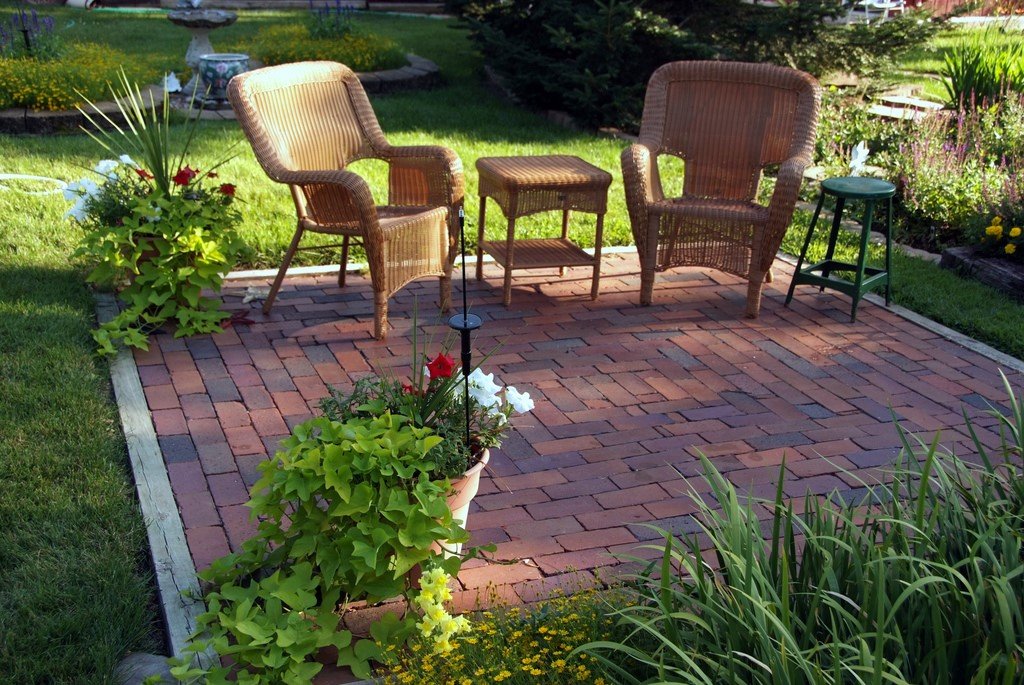
Best Professional Tips for Landscaping Your Garden
A garden should be a place where you truly feel inspired, relaxed, energized and at peace. No two people have the same idea in mind when imagining the perfect garden, so it’s no surprise that the best landscape design will vary from project to project.
If you’ve always dreamed of creating an outdoor escape that’s all your own, you need to start by creating a garden landscape that truly represents your personality and ideals. Whether you choose a DIY approach or hire the expertise of a professional landscaper, a perfectly groomed garden is within your reach.
Who Should You Hire?
There is a lot of planning that goes into designing an impressive garden space. If you choose to hire a professional, there are two experts to consider:
1. Landscaper
In the world of gardens, a landscaper is responsible for designing and building the structures that will hold the garden together. These include brickwork, retaining walls, bridges and patios.
2. Gardener
Of course, plants and flowers are a necessity in any garden. A professional gardener can help you choose the best plants for every season. They should also explain how to properly prune and care for them all year long.
Regardless if you’re only planning to hire one or both of these contractors, it’s essential that you take some time to scout for options and compare their options. Your garden is part of your investment and choosing someone who isn’t licensed and trained for the job will only cause stress and expenses.
Ideally, you should only work with professionals such as Coquitlam Retaining Walls. If this if your first time to hire these contractors, ask for recommendations from friends and family or check reviews online. This phase is important so you’ll know who your options are and how these contractors differ from each other.
Planning a Design

Once you decide to build a garden, the design is the most important thing to consider. A well-designed garden should be usable throughout the year. In addition to plants, you may also want to add different elements to turn your outdoor space into an inviting retreat space.
Since you own the garden, you’ll have the opportunity to design the area anyway you want it. However, if you see yourself being clueless on how to design your garden, it might be best if you look for inspirations online or check the garden of your friends and family.
Aside from letting your own creativity and personality shine in your garden sign, it’s also important to consider the following elements:
- Walls and Fences
Setting up boundaries is a must. Decide where the garden will start and stop, and plan walls or fences to encompass the perimeter. Aside from the location, make sure to determine the materials you want your walls and fences to have. Do you want to have walls and fences in plain colors? Or do you want these elements to have texture? The more precise you are with the things you want to have in your garden, the sooner you can turn your vision into reality.
- Patios and Pathways
Instead of walking on the lawn, you may want to create a pathway or patio. Concrete, stone and brick are common materials used to design pathways or patios. Patios and pathways are actually very important in gardens, especially if you plan on planting directly on the ground. Patios and pathways will control foot traffic and guide your friends and family on where they should step.
- Activity Areas
Consider the function of your garden. Do you want it to be a play area for the kids or a place to enjoy a meal? Zone specific areas for certain activities. There’s no set-in-stone rule when it comes to deciding how many activity areas should your garden have. As long as your garden is spacious enough, you can have as many activity areas in your outdoor space!
- Lighting
If you want to enjoy your garden in the evening, lighting is a must. Consider installing lampposts or hanging lights. How will these lights be powered? If they are solar-powered, place them near a sunny area. If they’re electric, adding a power source is a must.
- Plants, Shrubs and Trees
Determine exactly where you would like to place various types of plants. Trees are ideal for shade, while shrubs and hedges add more privacy. The placement of each plant is a critical part of your design.
- Water Features
Adding a water feature is always a good idea. Not only are ponds, fountains and waterfalls relaxing, but your plants also need a water source in case rain isn’t in the forecast.
Planning a Budget

Before beginning any landscape design for your garden, consider your budget. Know how much you have to spend, and be sure to stick to it. It’s possible to create a beautiful garden landscape on any budget.
If you don’t have a lot to spend, consider a few DIY projects to improve your current garden. Prune any overgrown shrubs and plants and pull weeds or unwanted seedlings. If you want to add new plants, you can consider trading with a neighbor.
Those who only want to spend a small amount should invest in a few books on gardening. You can also get advice from a local garden shop about which plants would be best in your outdoor space.
If money is no object, then consider hiring a professional. A landscaper and a skilled gardener can work together to design and build the garden of your dreams. Be sure to review and approve any designs before they begin building.
A beautifully landscaped garden will not only provide you with a lovely outdoor escape, but it will also improve the value of your property. Take the time to consider several design ideas before beginning this project.




